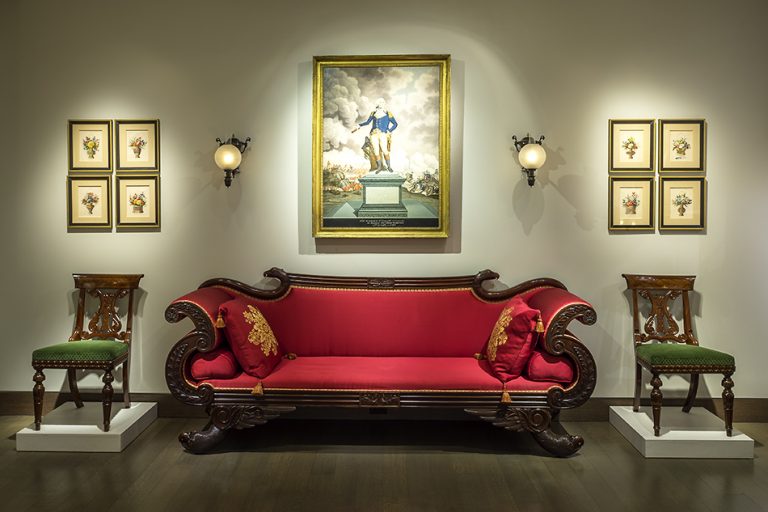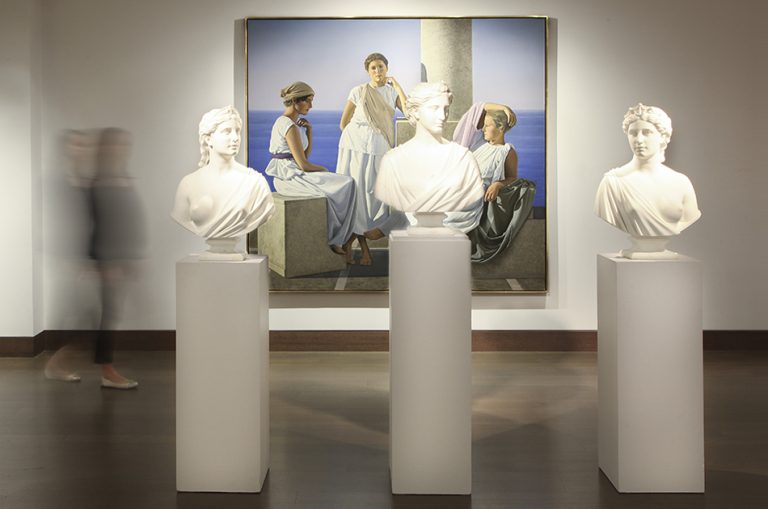![Houses (Grid) [255], ca. 1936-66](https://s30964.p1087.sites.pressdns.com/wp-content/uploads/2015/12/deeds_1.jpg)
Houses (Grid) [255], ca. 1936-66
When a 14-year-old boy named Reid Henderson rescued a book of drawings from a trash heap in Springfield, Missouri, in 1970, little did he know that the cast-off cache would rank among the most intriguing discoveries in the history of American art? or that he?d one day be responsible for bringing a marginalized figure to the walls of New York?s prestigious Hirschl & Adler Galleries. At the time, all that could be immediately deduced from the detailed, imaginative pencil-and-crayon illustrations (which included landscapes, botanical designs and portraits of animals, buildings, trains, steamships and mostly unidentified sitters) was that the artist had some association with State Hospital No. 3, a mental institution in Nevada, Missouri. All 283 drawings were done on the hospital?s billing stationary. Henderson stashed the work away for decades, then brought it to the attention of a Missouri historian in the hopes of selling it. It wasn?t long before rare book dealers and Outsider Art aficionados were hot on its trail. The book changed hands several times unitl 2007, when it was purchased for a five-figure sum by New York sculptor and dealer Harris Diamant, who presented several of the pages at the 2011 Outsider Art Fair in New York. The still-unidentified artist was introduced as the ?Electric Pencil,? a phrase that appears in one of his portraits, although electric is spelled “ectlectrc.”
![MR. TANNER [27]; WHOOP. COACH, [26], both ca. 1936-66](https://s30964.p1087.sites.pressdns.com/wp-content/uploads/2015/12/deeds_2.jpg)
MR. TANNER [27]; WHOOP. COACH, [26], both ca. 1936-66
![JAPAN. EES, [93], ca. 1936-66](https://s30964.p1087.sites.pressdns.com/wp-content/uploads/2015/12/deeds_3.jpg)
JAPAN. EES, [93], ca. 1936-66
Armed with this important new information, Diamant reached out to Hirschl & Adler Galleries, which had first promoted such esteemed self-taught artists as Bill Traylor and Forrest Bess decades ago. ?It really helps to know the back story,? says Thomas Parker of Hirschl & Adler, which is exhibiting 30 drawings, each priced at $16,000, through February 9. (The Collection de l?Art Brut, in Lausanne, Switzerland, will exhibit another 63 or so from March 15 through June 29.) ?We now know about his family life, his medical diagnoses and the chronology, which all helps us to understand some of his imagery.”
The eldest of five children, Deeds was born in 1908 in the Panama Canal Zone, where his father was stationed in the navy. He moved his family to a farm in Missouri when Deeds was a child. A strict disciplinarian, his father reportedly had little patience for his son?s shenanigans, and shipped him off to a school for the ?feeble minded? in 1933. In 1936, he was committed to State Hospital No. 3, where he stayed until 1973, when he was released and sent to the nursing home in which he died in 1987.
![SOUTHREN HOTELL CO [266] (detail); WOOLIN & COTON MILLS [265], both ca. 1936-66](https://s30964.p1087.sites.pressdns.com/wp-content/uploads/2015/12/deeds_4.jpg)
WOOLIN & COTON MILLS [265], both ca. 1936-66
Deeds’s portraits seem to say as much about him as they do about his sitters. His figures all have very light, clear, wide-open eyes, as though taking in the world without filters or buffers, while their tiny, pursed lips suggest an inability to communicate. The drawings, however, communicate quite profoundly and have extraordinary appeal as deeply personal artifacts.
He carried them around for decades in the binding he made, like a kind of ?talisman in the midst of his increasingly deteriorating living situation,? says Parker. ?He was drawing just for himself, and it doesn?t get more intimate than this ? that concept of raw art, or art brut, that Jean Dubuffet coined. That is just so fascinating.?


